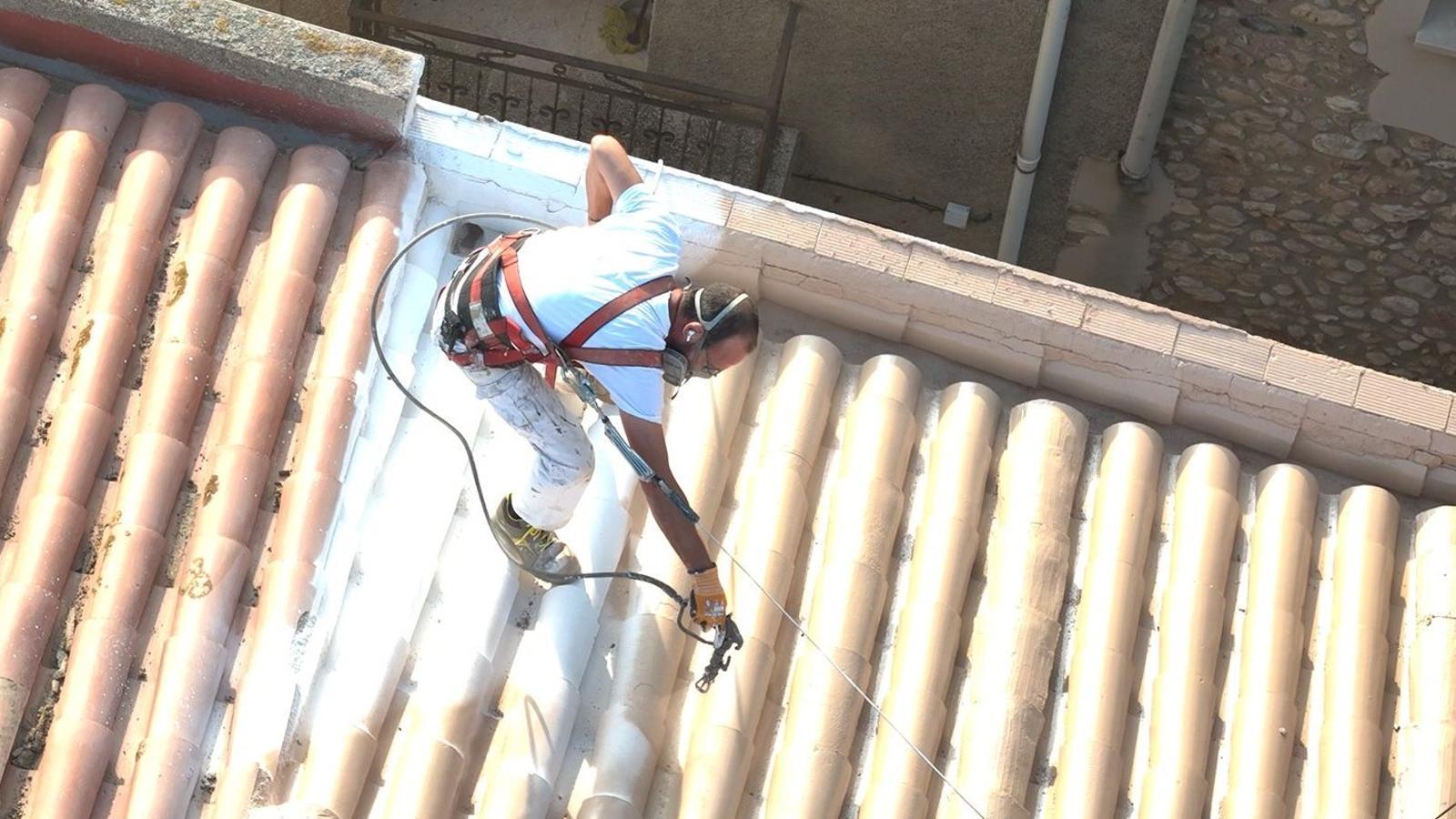Up to 15 degrees cooler: an aerospace solution to insulate homes from heat
Fischer brings Japanese technology to Spain to improve the energy efficiency of buildings.


BarcelonaIf there's one conversation that's been on everyone's mind these past few weeks, it's about the heat. In Catalonia, temperatures have broken all records this June, resulting in tropical nights and sweltering days. In fact, according to a study by the German company Fischer, which specializes in technical solutions for building fastening, insulation, and energy efficiency, one in five Spaniards feels unsafe in their home during heat waves, and this figure rises to one in three for families with babies.
According to the company, the reason is alarming: 90% of homes in the country were built before the Technical Building Code was introduced and are not prepared to withstand extreme heat. In fact, they explain, up to 30% of the heat experienced inside can enter through a building's roof. This turns our homes into "real ovens," also causing energy consumption to skyrocket.
Faced with this situation, Fischer has brought to Spain an innovative alternative capable of adapting to all homes. It is a solution inspired by Japanese aerospace technology, an easy-to-apply, paint-like coating for the roofs, covers, and facades of buildings and warehouses that allows them to be insulated. According to the company, "this solution reduces the temperature on the roof surface by up to 20°C, decreases the interior heat of the home by up to 15°C, and allows savings of up to 50% on air conditioning," which translates into "a real and sustainable alternative to fans and air conditioning."
In the words of Lidia Asensi, digital director of Fischer in Spain, "it is a technology that acts as insulation in the form of a membrane, and is also applied like paint," she explains in statements to theCompanies"We've been bringing it to Spain for two years now, but this year the situation is particularly complex in this regard, and we believe it's good for it to be more widely known," Asensi explains. "Our obsession is providing solutions for people, and with what's happening with extreme temperatures, we think it's a solution that should be known," he points out.
From satellites to buildings
"We've been looking for solutions to this problem for years, and thanks to a collaborator, we discovered that Japan uses this product to insulate satellites in space," says Asensi. Specifically, it's a technology designed by the Japanese Space Agency (JAXA) that's used to protect rockets and satellites from the heat upon re-entry into the atmosphere, with temperatures of up to 1,800°C. Fischer has developed the product's implementation and democratized its use in homes. "This product is a good solution for high temperatures in buildings because it's non-conducting; it's made with vacuum-packing nanotechnology, and therefore, what it does is bounce the heat away, and the little that reaches it doesn't enter the home," explains the executive.
This heat shield uses highly advanced ceramic microparticle technology, composed of nanostructured titanium dioxide (TiO2), which produces a thermal barrier effect that reflects both visible light and near-infrared rays, with half the conductivity. Furthermore, Asensi points out that, apart from the temperature - being an insulator, it also works for the cold -, this solution has more properties: "Negative ions eat up the positive ions, which are the ones that cause fungi and humidity, and improve air quality, therefore, it is also good for people who have respiratory problems."
Furthermore, Fischer points out that it is also very useful in businesses, especially for warehouses where there is machinery and where the ceilings are very high and regulating their temperature is very costly. "It's been very well received here in Spain; many architects are already installing it in many homes," explains Asensi. "It's also quite in demand on farms, where animals often die due to large temperature fluctuations, and this heat shield saves a lot of money in terms of temperature regulation," he points out. This solution can be found through qualified technicians or through Fischer itself, which offers a 10-year warranty, although in principle "it doesn't require reapplication," explains Asensi.
